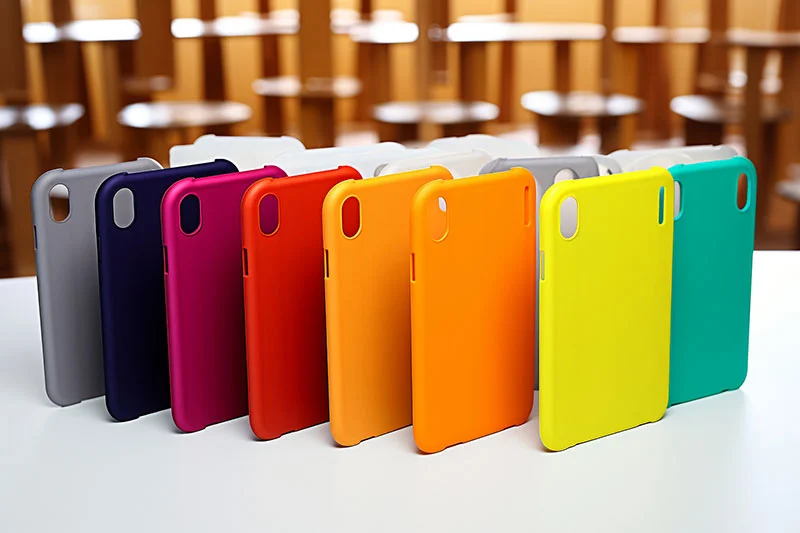What is an antimicrobial phone case?
An antimicrobial phone case is a protective covering for a mobile phone that is designed to inhibit the growth of microbes, such as bacteria and fungi. These cases are equipped with antimicrobial agents, which are substances that have the ability to kill or inhibit the growth of microorganisms. The purpose of using antimicrobial phone cases is to reduce the accumulation of germs on the phone’s surface, which is particularly relevant given the frequent handling of phones and the potential for bacteria to transfer from hands to the device.
see more about antimicrobial techonology
Are antimicrobial cases real?
Yes, antimicrobial phone cases are real products. These cases are designed with materials or coatings that incorporate antimicrobial agents, which are substances capable of inhibiting the growth of microorganisms such as bacteria, viruses, and fungi. Common antimicrobial agents used in phone cases include silver ions, copper, zinc, or specific chemical formulations with antimicrobial properties.
The purpose of antimicrobial phone cases is to help reduce the accumulation of germs on the phone’s surface, given that mobile phones are frequently touched and can harbor bacteria. The antimicrobial properties of these cases aim to inhibit the growth of microbes, providing an additional layer of protection against potentially harmful microorganisms.
Manufacturers often conduct testing to ensure the efficacy of the antimicrobial properties and the safety of the materials used. It’s important for users to follow manufacturer instructions, practice regular cleaning, and consider personal health conditions or sensitivities. Antimicrobial phone cases are available from various brands and are commonly used for hygiene and protection purposes.
What makes phone cases antimicrobial?
Antimicrobial phone cases are made with materials or coatings that incorporate antimicrobial agents. These antimicrobial agents are substances specifically designed to inhibit the growth and reproduction of microorganisms, such as bacteria, viruses, and fungi. The most common types of antimicrobial agents used in phone cases include:
Silver ions: Silver has natural antimicrobial properties, and silver ions can be embedded into the phone case material or applied as a coating. Silver ions can disrupt the cellular structure of microorganisms, preventing them from functioning properly and inhibiting their growth.
Copper: Similar to silver, copper also has antimicrobial properties. Copper ions can be integrated into the phone case material to provide protection against microbes.
Zinc: Zinc is another metal that exhibits antimicrobial properties. Like silver and copper, zinc ions can be incorporated into the phone case to create a surface that inhibits the growth of bacteria and other microorganisms.
Antimicrobial coatings: Some phone cases are coated with special antimicrobial substances that create a barrier against microbes. These coatings can be chemical formulations designed to kill or inhibit the growth of microorganisms on the surface of the case.
How to add antimicrobial agent into phone cases?
Adding antimicrobial agents to phone cases involves incorporating these substances into the materials used for manufacturing or applying them as coatings. Here are general steps for adding antimicrobial agents to phone cases:
- Select Antimicrobial Agent:
Choose an appropriate antimicrobial agent for the phone case. Common choices include silver ions, copper, zinc, or specific chemical formulations with antimicrobial properties.
- Material Selection:
Select the material for the phone case that can effectively integrate the chosen antimicrobial agent. Common materials include plastics, polymers, or other materials commonly used in phone case production.
- Embedding Antimicrobial Agents:
If using solid antimicrobial agents like silver, copper, or zinc, integrate them into the material during the manufacturing process. This can involve mixing the antimicrobial agents with the base material in a controlled manner.
- Coating Application:
If using antimicrobial coatings, apply them to the surface of the phone case. Coatings can be sprayed or applied using other methods to create a protective layer on the case.
- Testing and Quality Control:
Conduct tests to ensure the antimicrobial efficacy of the phone case. This may involve testing against specific bacteria or other microorganisms to confirm the desired antimicrobial effects.
- Regulatory Compliance:
Ensure that the phone case complies with relevant regulations and standards for antimicrobial products. This may involve testing for safety and efficacy and obtaining necessary certifications.
- Production Scale-Up:
Implement the antimicrobial incorporation process at scale during the manufacturing of phone cases. Ensure consistency in antimicrobial agent distribution and effectiveness across all produced cases.
Are antimicrobial phone cases safe?
It’s crucial to highlight that the safety of antimicrobial phone cases often depends on the specific antimicrobial agent used. AntibacMax antimicrobial agents have undergone testing by authoritative institutions. The results of tests assessing skin, eye, and oral toxicity indicate that the antimicrobial agent is considered safe. Therefore, based on this information, it can be concluded that phone cases containing AntibacMax antimicrobial agents are safe.
See more about: How Antimicrobial Technology Safeguards Your Products


-300x210.jpg)
